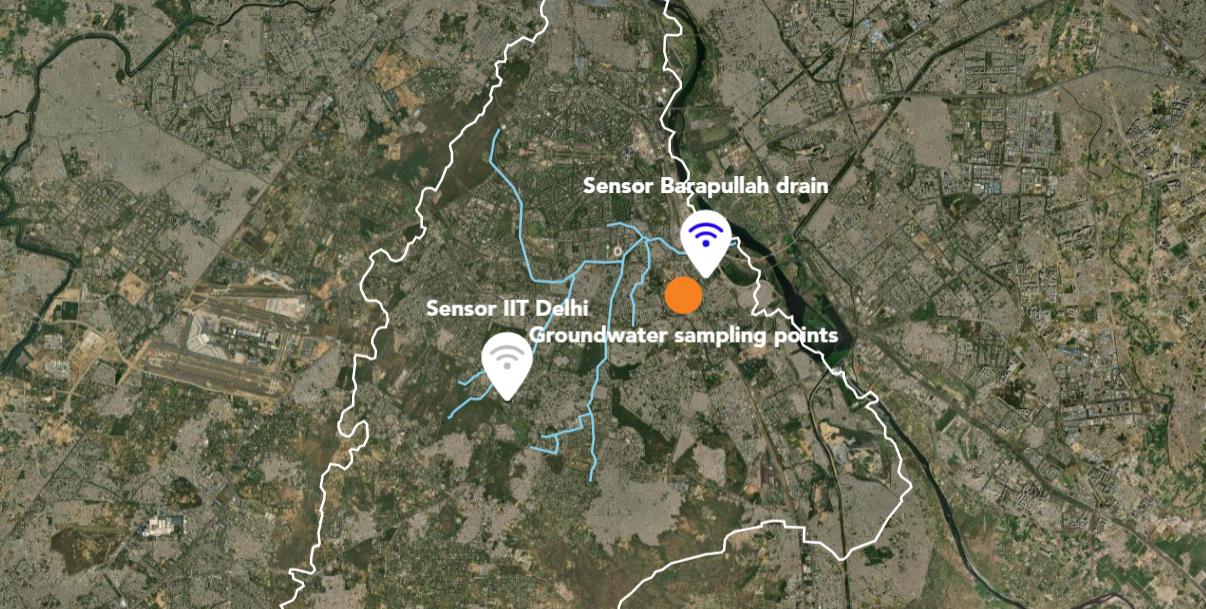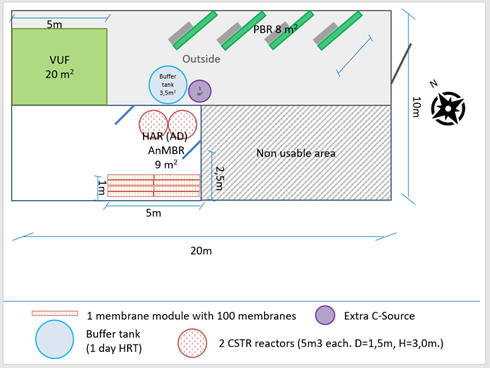About the Barapullah drain
The Barapullah drain was once a major storm drain. Due to limitations in urban water sewage treatment, the Barapullah currently discharges approximately 1.25 million litres of wastewater per day into the Yamuna river, accounting for 80% of the stormwater which is transported to the Yamuna from the region. The drain is approximately 100m wide and 16km long.
Domestic sources account for approximately 85% of pollution to the Yamuna river and include debris, untreated sewage and industrial effluents. Consequently, outflows contain concentrations of heavy metals (including lead (Pb), zinc (Zn), and copper (Cu) ), biochemical oxygen demand (BOD) and dissolved oxygen (DO) which have historically exceeded recommended levels. More recent studies have highlighted the emergence of antibiotic resistant bacteria (ARB) originating from untreated sewage on the Yamuna river.
Main challenges
The main challenges for this site and many similar sites in India are:
- Health related issues such as microbiological contamination due to use of contaminated water;
- Pollution of rivers due to discharge of organics, nutrients and micropollutants (such as pharmaceuticals);
- Mixture of garbage and wastewater due to lack of organised garbage and waste removal services;
- High flow and wastewater load variations due to lack of flood control and monsoon water drainage system;
- Lack of sewage treatment operations
Pavitra Ganga Dashboard
Discover the results of the water quality monitoring and modelling of the Pavitra Ganga project for the Barapullah Drain in New Delhi.

Layout pilot site

